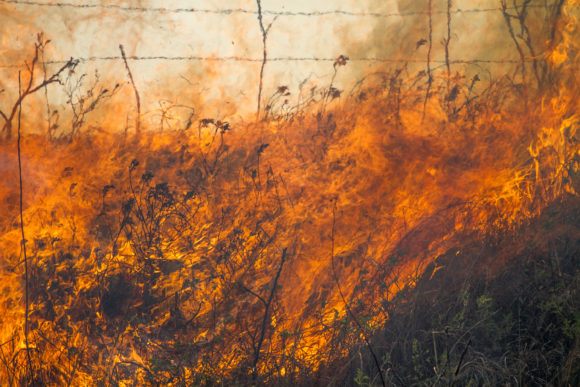Continued hot and dry conditions across much of the state have resulted in increased wildfire activity, particularly in north central Texas and in areas along the Interstate-35 corridor, the Texas A&M Forest Service reports.
Activity and fuel dryness is expanding north and east into higher population centers, including further east along the Interstate-45 corridor as well.
Consecutive days of triple digit temperatures across much of the state has accelerated the drying in wildland vegetation and created a conducive environment for the ignition and spread of wildfires.
In a media release, Brad Smith, head of the Texas A&M Forest Service Predictive Services Department, said: “Many of these wildfires are starting late in the day, or early evening, when we observe daily peak heating and an increase in gusty winds.”
A cold front that is forecast to move into the state early this week will likely end the streak of 100-degree days, but is not expected to provide enough rainfall to improve the vegetative dryness that is supporting wildfire activity.
Over the seven days previous to Aug. 13, state and local resources responded to 94 fires that had burned 5,483 acres. This includes many large, multi-day fires including the still-smoldering Pennington Creek Fire in Palo Pinto and Jack Counties at 2,654 acres and 95% containment. Activity in central portions of the state increased this week with new fires in Brown, Mills, Caldwell, Williamson, and Bastrop Counties.
Many of the recent wildfire starts have been attributed to human activities — such as debris burning — and are preventable. So far in 2020, 902 wildfires that have burned 10,994 acres were the result of debris burning. This includes 16 fires that have burned 104 acres recently.
Since Jan. 1, 2020, state and local resources have responded to 3,330 fires that have burned a total of 171,204 acres. Aviation resources have flown 1,510 hours, dropping 1,517,151 gallons of water and retardant on Texas wildfires so far this year.
The majority of wildfires in Texas are human caused. With hot and dry conditions statewide, many counties in Texas are currently under a burn ban.
Source: Texas A&M Forest Service
Was this article valuable?
Here are more articles you may enjoy.



 Surplus Lines Commercial Growth; Fla. Litigation Costs Reach New High in 2023
Surplus Lines Commercial Growth; Fla. Litigation Costs Reach New High in 2023  Viewpoint: Deepfake Fraud Is On the Rise. Here’s How Insurers Can Respond
Viewpoint: Deepfake Fraud Is On the Rise. Here’s How Insurers Can Respond  Soccer Officials Arrested After Melee That Damaged Hard Rock Stadium in Miami
Soccer Officials Arrested After Melee That Damaged Hard Rock Stadium in Miami  Wall Street Pushes Back After Activists Escalate Protests
Wall Street Pushes Back After Activists Escalate Protests 

